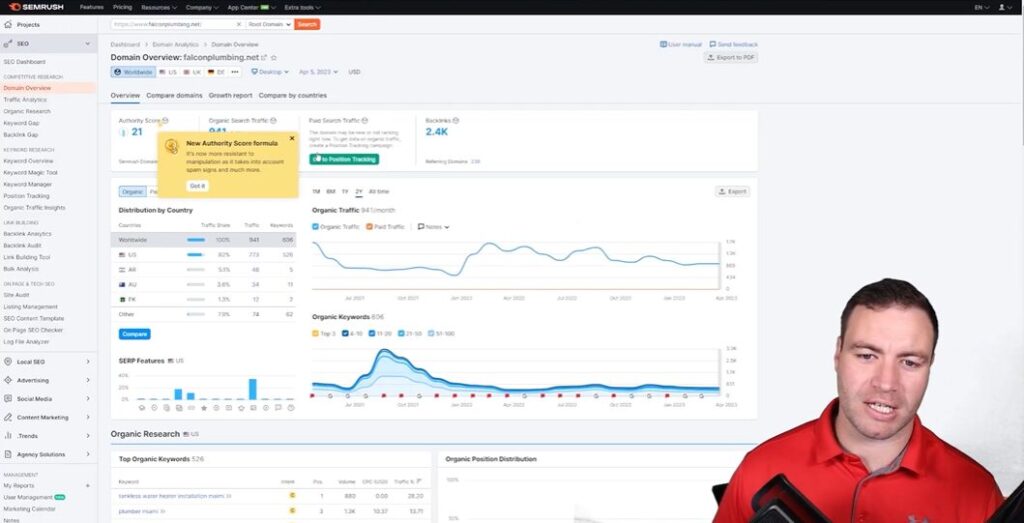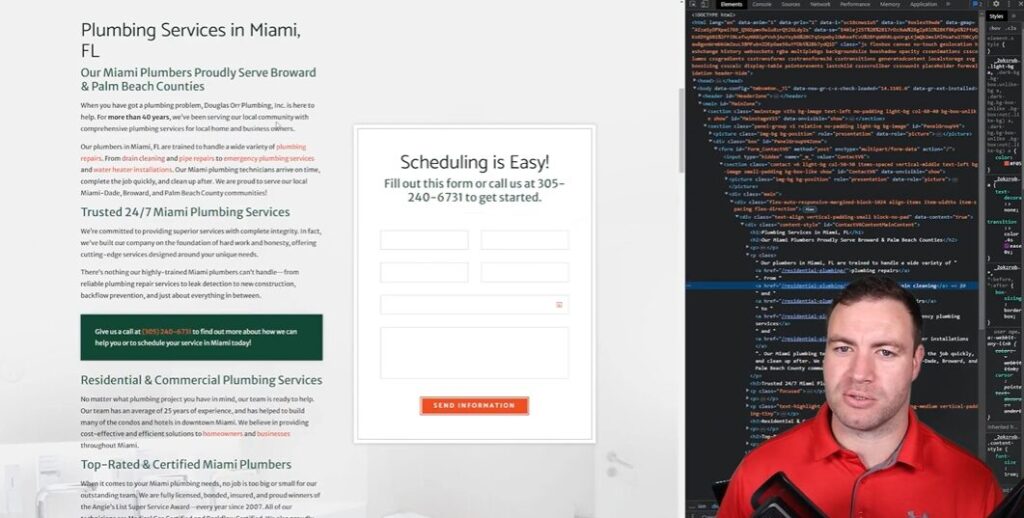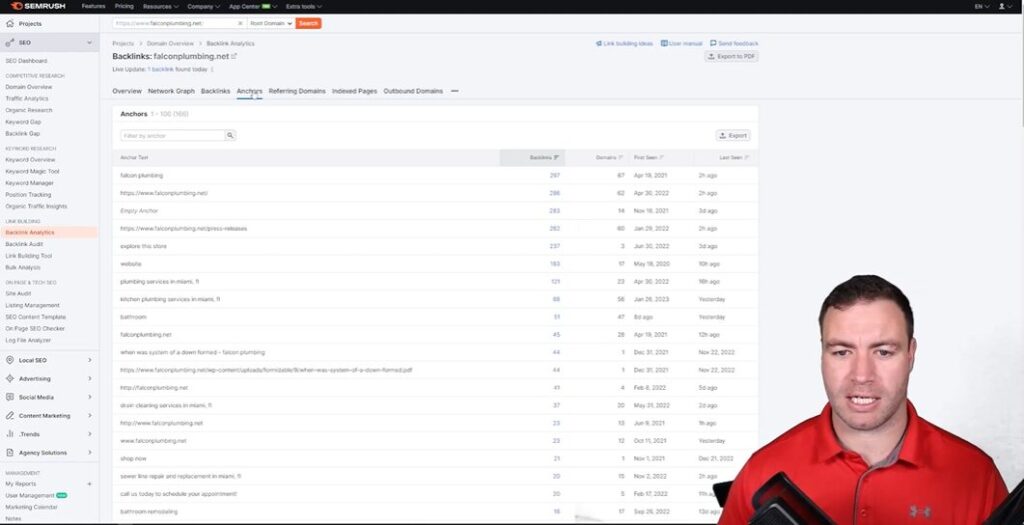As someone who's navigated the choppy waters of digital marketing, I can tell you that even minor details, like what is anchor text, can make a monumental difference to your SEO success. A few years back, I stumbled upon the phrase 'anchor text' during a late-night web crawl, and it felt like unlocking a treasure chest. Little did I know, it would reshape my entire approach to creating quality SEO solutions. Let’s explore into the world of anchor text and learn how to make it work for you.
TL;DR: Anchor text is a crucial element for SEO success, affecting how search engines interpret your links. This post covers its significance, how to optimize your anchor text, and provides tools and techniques to improve your backlink strategy.
Table of Contents
The Basics Of Anchor Text
Understanding Anchor Text
So, what exactly is anchor text? It refers to the visible characters and words that hyperlinks display when linking to other web pages. For instance, imagine clicking on the phrase "best pizza in New York" to land on a restaurant's site. That phrase doesn’t just look appealing; it also provides vital context for what the linked page contains. This is crucial for both users and search engines like Google.
Why should we care? Because anchor text plays a significant role in SEO. It acts as a signal to search engines, indicating what the linked content is about. Consequently, a well-optimized anchor text can help improve a business website's ranking, making it easier for potential customers to find services or products. Are you beginning to see the picture?
Different Types Of Anchor Text
- Exact Match: This type uses keywords that exactly match the target page's content, like "Miami plumbing services."
- Partial Match: Here, the keywords are similar but not an exact match, such as "plumber in Miami."
- Branded: This includes the brand name, e.g., "Falcon Plumbing."
- Generic: This refers to a link with words like "click here" or "read more." These are less informative.
- Naked Link: This is simply the URL, like www.falconplumbing.com.
I’ve noticed that many marketers overlook the power of anchor text. This is a mistake! By diversifying the types of anchor text, we can convey a clearer message to search engines. Think of it as a layered approach to communication. Are you covering all your bases?
Why Every Digital Marketer Should Care
As a digital marketer, understanding and optimizing anchor text is essential. It not only boosts our SEO game but also builds trust with our audience. If users click on a link and the page or content matches what they expect, they’re more likely to see our brand as reliable. This leads to higher engagement and ultimately, conversions.
Furthermore, analyzing competitors can provide insights into effective anchor text use. Tools like SEMrush allow me to explore how rivals are structuring their internal and external links. For example, when I examined Falcon Plumbing, I found that their anchor text was keyword-rich, which really positioned them well in Google search results.
In short, anchor text isn't just a minor detail - it's a powerful component of SEO and user experience. Embrace it, and you'll find yourself ahead of the game!
How Does Anchor Text Boost Your Page's Ranking In Google

Anchor text plays a crucial role in SEO storytelling. It communicates context to search engines like Google. But how does it do that?
Understanding Anchor Text
So, what is anchor text? Simply put, anchor text is the clickable text in a hyperlink. For example, if I write “learn more about SEO strategies,” the words “learn more about SEO strategies” are the anchor text linking to a page with relevant information. Google and other search engines analyze this text to understand what the linked content is about. It's like giving hints to the search engine about what to expect on the other side of that link.
How Does Anchor Text Communicate Context
Each time you include anchor text, you're painting a picture for Google or any other search engine. You're not just linking; you're telling a story. For instance, linking with descriptive anchor text like “local plumbing services” tells search engines that the target page is relevant to that specific topic.
- Using relevant keywords boosts your page’s visibility.
- Contextual anchor text helps search engines rank your page better and faster.
Effective Examples Of Anchor Text In SEO Strategies
Many companies excel at using anchor text effectively. One prime example is a company like Falcon Plumbing. By choosing phrases like “best plumbing services in Miami,” they enhance their relevance. It targets local search queries while linking to their service pages. This strategy helps them position themselves as authorities in their niche.
Telling A Story Through Anchor Text
So, how can we tell a story through anchor text? It’s simple: use narrative anchor texts that resonate with your audience. When you choose anchor text, think about the message you want to convey. Are you helping them? Are you providing valuable information? By strategically selecting your anchor text, you can shape the user's journey. You can guide them from curiosity to action. Ask yourself: What do I want my readers to think when they click this link?
As Ron from Osborne Digital Marketing emphasizes, “The essence of anchor text lies in its ability to tell search engines a coherent story about the context of the link.”
In conclusion, anchor text is more than just words in a hyperlink. It's your SEO storytelling tool. Make it count! The right choices can significantly impact your content, page, online presence, and visibility. Let's optimize wisely!
Analyzing Your Anchor Text With Tools

Introduction To SEMrush And Other Tools
Let’s talk about anchor text. You know, the clickable words that link one page to another? They are more important than many realize, especially for SEO. I often rely on cheap yet reliable tools like SEMrush to analyze my anchor text. Why? Because understanding anchor text helps me see how search engines perceive my website.
SEMrush isn’t the only option. Various tools are available, each with unique features for analyzing backlinks and anchor text. Some popular alternatives include Ahrefs and Moz. However, I find SEMrush's user interface intuitive and packed with useful data.
Step-By-Step Guide To Analyzing Anchor Text Using SEMrush
Ready to dive into SEMrush? Here’s a straightforward guide to get you started:
- Create an account or log into your existing SEMrush account.
- Navigate to the “Backlink Analytics” section from the dashboard.
- Input your domain into the search bar and hit enter.
- Review the anchor text distribution chart. This will show the percentage of each anchor text used.
- Analyze backlinks for diversity and relevance. Look at both internal links and external ones.
By following these steps, I can see how my site stacks up against competitors. This is crucial when trying to refine my SEO strategies.
Practical Tips For Optimizing Your Existing Anchor Text
Now that we’ve got the basics down, let’s talk optimization. Here are some practical tips I often apply:
- Vary your anchor text. Use a mix of keyword-rich and branded terms. Don’t overdo it with exact match anchor text or keywords.
- Focus on searching for relevant keywords. Ensure every keyword describes the linked content accurately.
- Audit your existing links. Identify and update any outdated or overly generic anchor text for every link.
- Monitor competitors. Tools like SEMrush allow you to spy on competitors’ anchor text strategies. What keywords are they using? Learn from their approach.
- Test and adjust. Experiment with different anchor link texts and track your rankings to see what works best.
Remember, analyzing anchor text isn’t just about counting links. It's about creating a coherent narrative for search engines. It’s about telling them what your content or page is all about. Let’s keep optimizing!
Link Analysis And Learning From Your Competitors

When I’m going deeper into the world of SEO, one of the core aspects I focus on is anchor text. But what makes it so important? Anchor text is essentially the clickable text in a hyperlink. It guides users and search engines to a related content or page. So, how do we assess our competitors' anchor text strategies? Let’s break it down.
1. Assessing Competitors’ Links, Keywords, And Anchor Text Strategies
First off, I like to utilize tools like SEMrush to analyze competitors’ backlinks. This tool is also useful for your link building strategies. By examining the anchor text they use, I can discern patterns. What keywords are they targeting? Are they using a branded anchor text, or are they experimenting with long-tail keywords? Understanding their approach gives me insights into their strategy.
- Look at the variety of anchor text types they use.
- Assess how frequently they reference certain keywords.
- Determine the context in which their links are placed in every page.
Every detail counts. If a competitor is using “plumber in Miami” consistently, it tells me they're likely optimizing for that search query. That’s a premium example of how anchor text communicates relevance to search engines such as Google.
2. Domain Authority And Rankings
Next, we can’t overlook domain authority. It’s a critical factor in how well a page or site ranks. By analyzing the domain authority of our competitors, we get a measure of how strong they are in search results. A higher domain authority often correlates with better rankings.
I usually compare the number of authoritative backlinks they have relative to their anchor text strategies. If a competitor has high domain authority and optimized anchor link text, it means they are doing something right. They likely have a solid link building strategy.
3. Strategies To Outperform Competitors
So, how can we outperform competitors based on their anchor text usage? Here are some strategies to consider:
- Diversity is key. Don’t just focus on a single keyword. Use variations for every link.
- Prioritize quality over quantity. Make sure your backlinks come from reputable sources.
- Regularly update your anchor text. Adapt to changing trends in your industry to stay relevant.
In my experience, regularly assessing and adapting my strategy is crucial. By understanding competitors' anchor text strategies and domain authority, we can devise a plan that not only responds to current rankings but also anticipates future shifts in the SEO landscape.
Final Thoughts On Anchor Text Optimization
As we wrap up this discussion on anchor text optimization, I want to take a moment to recap its significance in the world of SEO. Anchor text is more than just clickable words in a hyperlink; it’s a vital part of how search engines like Google understand the context of the links. Think of it as a signpost directing web traffic. When used effectively, it guides people and search engines alike toward a relevant content or page.
Through my journey in refining my anchor text strategy, I’ve seen firsthand the tremendous impact it can have on search rankings. Initially, I treated anchor text merely as a formality, but as I explored deeper, I discovered its power. For instance, leveraging specific phrases like “Miami plumbing services” helped elevate my website’s visibility. I found that focusing on the relevance and clarity of my link and anchor text not only improved my rankings but also increased user engagement. It’s all about creating a coherent narrative for search engines to follow.
Now, I firmly believe in the necessity of being proactive. I encourage everyone - yes, you - to experiment with various anchor text techniques. Don’t hesitate to test different keywords, styles, and placements in the page. Some may find that keyword-rich anchor texts yield the best outcomes, while others might benefit from more varied phrases. The digital landscape is constantly evolving, just like user behavior.
Also, don't forget to analyze what works for your competitors. Create a natural anchor text ratio in your backlink profile. Tools like SEMrush have been game changers for me. By observing your competitors’ anchor text SEO strategies, you can uncover valuable insights that can inform your own approach. After trying this out myself, I found it enlightening to compare my anchor text performance against industry leaders. It’s a practical way to gauge how effectively I’m conveying relevancy through my links. There are may reliable anchor text checker tools available online for you to use.
In conclusion, optimizing anchor text deserves your attention more than paid ads. Reflecting on my experiences, I can confidently say that thoughtful, strategic use of anchor text significantly contributes to better SEO performance. Remember, the key is to craft an anchor text strategy that makes sense for your content and resonates with your audience. Keep experimenting, keep analyzing, and you’ll see progress. So now you know what is anchor text. Happy optimizing!




